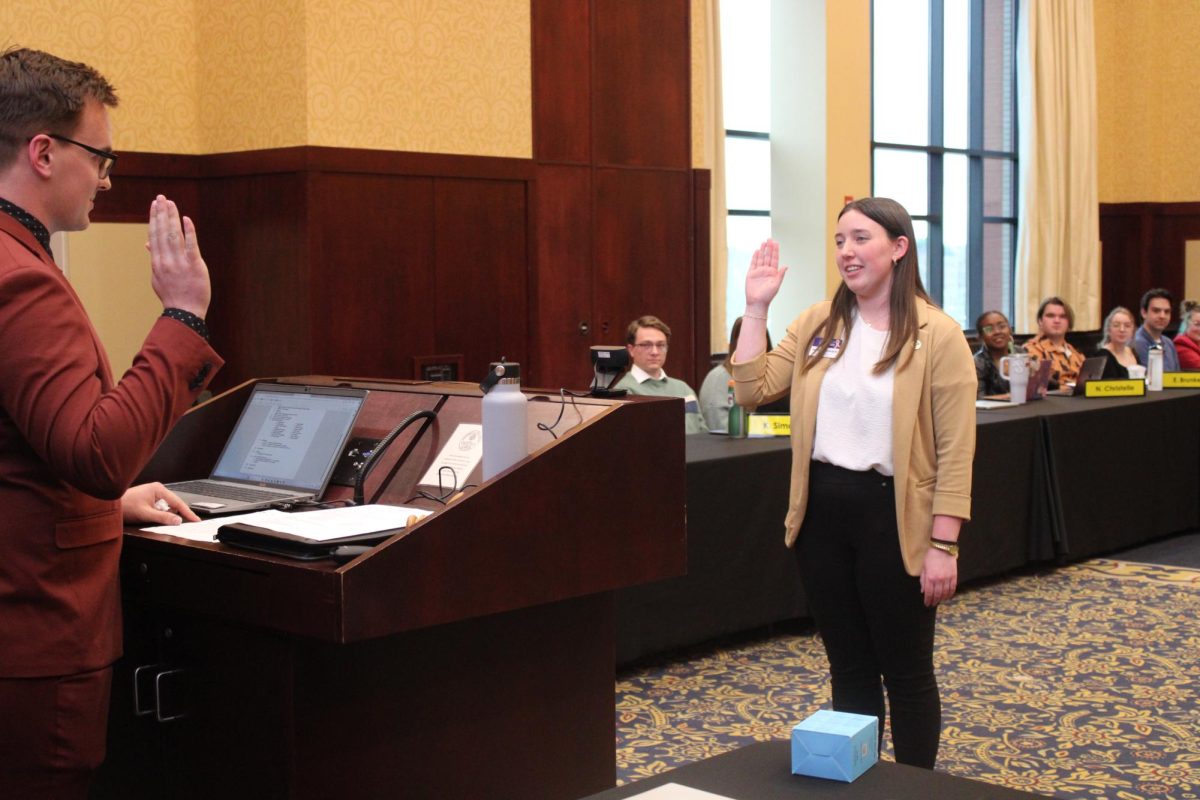 Molly Tumanic
Molly TumanicResidents of Katherine Thomas and Putnam residence halls came back to campus this semester to find that they had something new – a waterfront view.
One Putnam resident, sophomore Abby Ofori-Amoah, was not thrilled about the change.
“I have a perfect view of (the riverbank) from my room,” she said, “and now it just looks so plain.
The open look over the water is a result of the completion of the first phase of the riverbank stabilization plan, said Terry Classen, director of facilities planning and management.
The plan was developed after 1993 flooding uncovered structural weakness in the area. A gap 330 feet long and six inches wide was caused by the slope’s failure.
In a September interview Classen explained slope stability in terms of a sand castle.
If you build a pyramid out of sand, and then press your hand on it, he said, the pyramid would collapse under the pressure.
When floodwaters are absorbed into the soil of the riverbank, something similar occurs, he said. When the water tries to flow out of the bank, pressure builds, causing slope failure. The slope failure is what led to the gap in the riverbank.
In order to begin stabilizing the bank, the area had to be cleared of trees and shrubbery, Classen said.
The sole tree that remains on the riverbank – an oak tree – will be incorporated into the future landscape design, Classen said.
The area was cleared from Jan. 19-24, even though the contractor, Steffes Construction, was allotted two weeks to complete the project. Classen said the final cost of the project still is being determined.
Tony Steffes, owner of Steffes Construction, was amazed that the project was completed quickly and without any injuries.
“Tree clearing is one of the most dangerous professions there is,” he said.
According to the U.S. Bureau of Labor Statistics, in 2002 about 118 timber cutters of 100,000 were killed on the job, the highest mortality rate of any profession in the nation.
Steffes said it was necessary to finish the dangerous work during winter break for a number of reasons. The primary reason was to give the bank added stability in the spring, when floodwaters rise and high winds are the most prevalent.
“Basically, we wanted to make sure that the tree tops would not work as a lever pulling at the bank,” Steffes said.
The contractor and his team of seven workers removed trees from a section of riverbank about 905 feet long. Some of the trees, Steffes said, were about 100 feet tall.
Another reason behind the January clearing was to protect local bird populations, Classen said.
University biology professors raised concerns over the timing of the tree removal – removing the trees in spring had the potential to disrupt nesting patterns, Classen said.
Ofori-Amoah said while she understands the need to remove the trees, she still is disappointed. One of the attributes of UW-Eau Claire’s campus that attracted her was the river landscape.
Despite loud concerns from neighborhood residents about early designs for the riverbank, Classen has not received any complaints related to the tree removal.
The project will be put on hold until after May 24 when the university will close Garfield Avenue and begin installing geopiers – 30 inch-wide holes drilled deep into the ground packed with gravel – to help stabilize the area.
Classen anticipates the project will be entirely done by the time students return to campus next fall.






